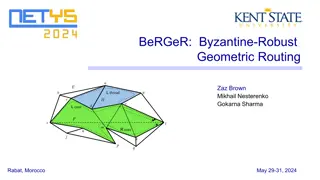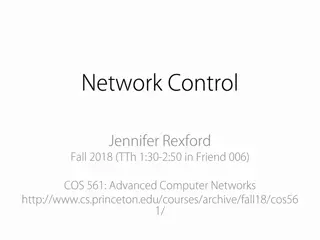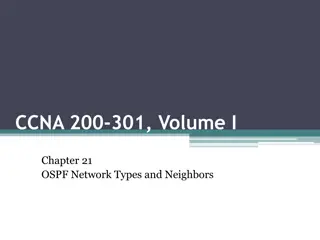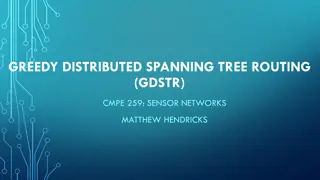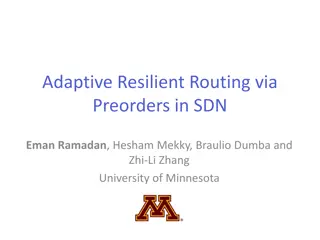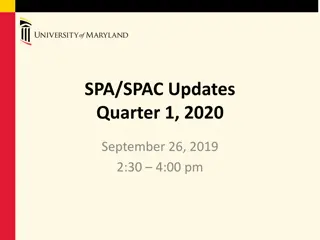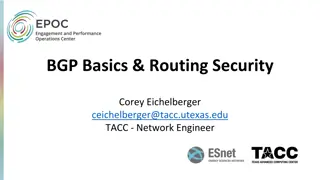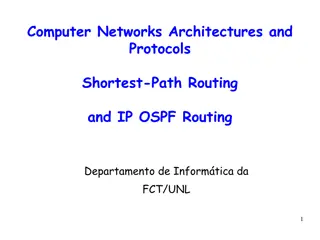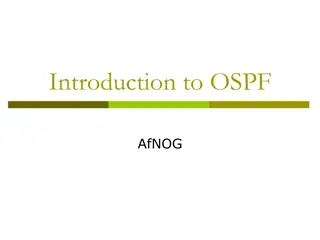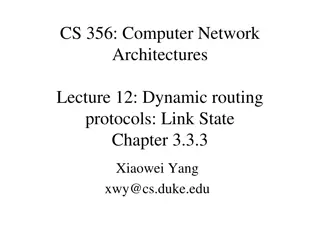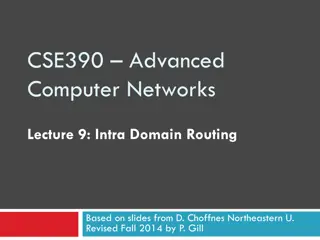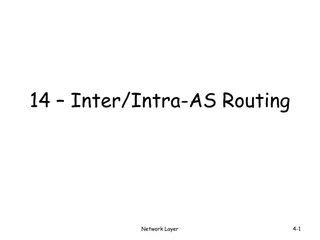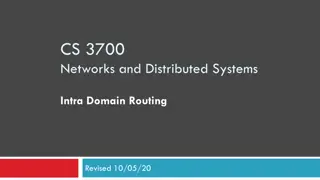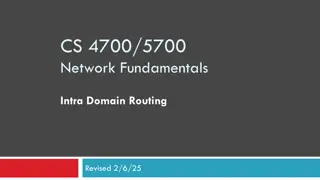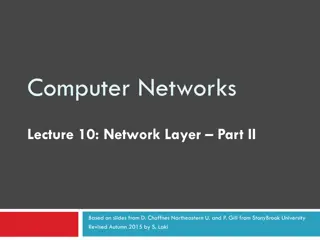OSPF: Intradomain Routing Protocol
OSPF (Open Shortest Path First) is an intradomain routing protocol based on the link-state routing protocol. It calculates the metric cost of reaching a destination from the host by assigning weights to links based on factors like throughput, round-trip time, and reliability. OSPF uses forwarding tables, link-state advertisements, five types of link-state advertisements, OSPF messages, and implements the link-state routing algorithm with augmentations to handle message exchange.
Download Presentation

Please find below an Image/Link to download the presentation.
The content on the website is provided AS IS for your information and personal use only. It may not be sold, licensed, or shared on other websites without obtaining consent from the author.If you encounter any issues during the download, it is possible that the publisher has removed the file from their server.
You are allowed to download the files provided on this website for personal or commercial use, subject to the condition that they are used lawfully. All files are the property of their respective owners.
The content on the website is provided AS IS for your information and personal use only. It may not be sold, licensed, or shared on other websites without obtaining consent from the author.
E N D
Presentation Transcript
OSPF Open Shortest Path First (OSPF) is also an intradomain routing protocol it is based on the link-state routing protocol
Metric Cost of reaching a destination from the host is calculated from the source router to the destination network. Each link (network) can be assigned a weight based on the throughput, round-trip time, reliability
Five types of link-state advertisements: router link, network link, summary link to network summary link to AS border router external link.
OSPF Algorithm OSPF implements the link-state routing algorithm we discussed in the previous section. However, some changes and augmentations need to be added to the algorithm: After each router has created the shortest-path tree, the algorithm needs to use it to create the corresponding routing algorithm. The algorithm needs to be augmented to handle sending and receiving all five types of messages.



